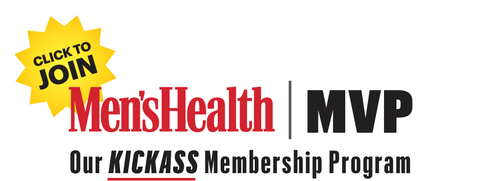Trainer Marcus Filly, a former CrossFit Games competitor, is back with a new YouTube video on exactly how is method of “functional bodybuilding” can help you become a stronger, fitter CrossFitter. Filly, after all, was an elite CrossFit competitor for seven years.
“You’re not going to get them simply from doing more AMRAPs,” he says. “CrossFit is a sport based on competing in strength and conditioning disciplines, and many people have thought over the years that all you need to do to get better at this sport is to simply just do more and more of it, over and over again.”
Instead, he’s narrowed down training methods, disciplines and movements to perform better at CrossFit competitions. Here are his seven favorite movements from his functional bodybuilding library that have a great carryover to CrossFit.
Dumbbell or Kettlebell Prone Row
“This is designed to help you with your horizontal pull to improve chest to bar pullups and your capacity within that movement,” says Filly.
Chest to bar pullups are notoriously difficult, and not a natural position for many people. But this move will help you gain strength.
“I would advise using a slight incline, as this is going to mimic the line of force of the chest to bar pullup,” he says.
He notes you should also avoid overloading this move. “Prioritize full scapular motion and pulling your elbows as far behind you as possible,” he says.
Cyclist Front Squats
According to Filly, this exercise will translate well to your heavy barbell lifts and Olympic lifts, especially since most of the squatting seen in CrossFit competitions feature an upright, vertical squat rather than a back squat, which is more prevalent in powerlifting.
“In the vertical squat position, the knees go way over the toes,” he notes, and one way to exaggerate this position is with the cyclist front squat. You’ll need a ramp to elevate your heels.

To do it well, Filly says you need to keep your torso as upright as possible, while keeping your elbows very high and above your knees and letting your knees drift out over your toes. (He also notes that your load on the bar will need to be significantly less than your maximum front squat weight.) Only give this a go if you’re a veteran front squatter.
Filly Press
This works scapular endurance as well as shoulder range of motion and strength, which will help with your handstand pushups, push press, push jerk, and front racks. The Filly press is a move he’s been integrating in his training since 2017, which “combines an isometric kettlebell rack hold with a single arm dumbbell Arnold press at the same time.”
According to Filly, the exercise can be performed in a variety of positions, like toe kneeling, half-kneeling, standing, or seated.
“What you should be focused on is full rotation of the dumbbell, from supinated at the bottom of the rep, to pronated at the top of the rep,” he says. “With the kettlebell rack, you want to keep your elbow down and pressed against your body the entire time. Avoid letting that elbow flare up and out to the side.”
Rower Slide Board Pike Up
This is a big core flexion movement that helps with toe-to-bar flexibility, as well as closed-chain handstand stability and strength.
“As you move up into the pike position, you’re going to be bringing your head as close to the rower as you can at the top of the rep, which mimics proper overhead position for handstands,” says Filly. “Try to stare through your arms at the rower as opposed to looking down at the floor in the pike position.”
Banded Deficit Romanian Deadlift
This move can be done at various width grips, including the clean grip and snatch grip. It’s great for movements like deadlifts, power cleans, and kettlebell swings, and will help make your body more resilient for high-repetition hinging moves.
“We’re extending the range of motion with the deficit, strengthening you at the end range where athletes are usually most vulnerable,” notes Filly. “It also means mid-range strength will become more robust.”
This move will help build strong glutes and hamstrings, and the banded loading makes sure you don’t overload the lengthened range of motion at the bottom of the movement. “This will allow you to get great training volume without requiring long recovery periods between your sessions,” he says.
Pause Parallette Pushups
The deep range of motion used for this exercise will help to make your body more resilient for mid and end range movements like high-speed kipping, dips, ring dips and burpees. Filly says it’s a shoulder extension training move that CrossFitters should be doing.
“The lengthened position of the pec and the shoulders is a great way to build strength and resilience in this vulnerable area of the upper body,” says Filly. “The goal with each rep should be to let the chest drop as far through the paralettes as possible, and let the elbows get as far behind the body as you can, which will build end range strength and stability.”
Side Plank Powell Raise
This exercise will help you fight internal rotation and improve your scapular retraction strength.
“This is an isometric core movement that is going to get combined with another rotator cuff-specific exercise,” says Filly. He chose this exercise to train the frontal plane, since he says that so much of CrossFit is sagittal plane -ocused.
It also will help you overcome lateral stability imbalances while also making your rhomboid muscles stronger to support better chest to bar pullups and upper body gymnastics in CrossFit.
“Don’t load this heavy. Get into the proper position and make sure your body isn’t rotating all over the place trying to overcome some weight that is too heavy,” notes Filly.
Source: Read Full Article
